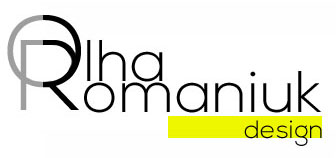Pomeroy Studio unveils an eco-development design that aims to set sustainability benchmarks for future mixed-used projects in Malaysia, writes Olha Romaniuk.
To mark its transition from a centre for palm oil production to a vocational education and trade hub, Johor’s former colonial town of Kluang is set to receive its first eco-friendly development, Newpark, courtesy of Singapore-based Pomeroy Studio. Aside from a sizeable residential community, the new eco-township will contain a park, an expo-trade centre, an education hub, a hotel and convention facilities, shops, offices and business parks, all of which will incorporate sustainable strategies that will set benchmarks for future mixed-use developments in Malaysia.
While it is still quite the rarity to see a developer set sustainability and eco-friendliness as forefront goals for a project, Majupadu Development Sdn Bhd took a road less travelled by working with Pomeroy Studio to mastermind Newpark as a flagship project for sustainable living. The design team at Pomeroy Studio took on the challenging assignment as an opportunity to set the standard for an upgrade of the town of Kluang for the future, keeping in mind the project’s relevance in a larger context of the town.
“This may be humble in scale in comparison to the broader regional growth of Johor, but what the 164 acre master plan demonstrates is a self sustaining approach that need not to draw from the broader infrastructure of the State, yet whose identity and economic mix can help support / complement ‘the bigger picture’. Newpark will be the largest master planned commercial project in Kluang and seeks to balance 21st century trade and education with green living,” says Jason Pomeroy, founder and principal of Pomeroy Studio.
The anchoring element of the entire development is the Promenade – a park that draws inspiration from the nearby landmark of the Gunang Lambak hills and connects all programmatic elements of the development through an abundance of recreational and social activities within this zero energy public realm. This connective approach is also a deliberate choice from Pomeroy studio to link the existing surrounding urban context to the new development.
“The existing undulating topography of the land was one of the advantageous considerations, as it allowed us to create character and identity to the streetscape rather than having a flat, monotonous landscape. Overlaying the natural element of the topography with the rigours of a human element, the planning grid facilitated the connection between the existing colonial infrastructure and the modern planning context – allowing seamless connectivity between the old and new urban fabric,” explains Pomeroy.
Balancing greenery with shaded open spaces and pavilions in the landscape programmed for future social activities, Pomeroy Studio plans to offset energy consumption values within the Promenade with a number of renewable energy sources, like solar PV. Elsewhere in the development, Pomeroy Studio uses greenery to reduce ambient temperatures and provide rainwater run off, while enhancing the overall bio-diversity of the site.
Other programmatic elements within the new eco-township combine residential living and resort-style recreational activities, while focusing on healthy and green lifestyle choices for its residents. Employing a number of passive design strategies, such as the deliberate orientation of the buildings to receive maximum natural sunlight and ventilation, Pomeroy Studio is also utilising a modular approach to construction to reduce material waste on site. Green materials with high recycled and recyclable quantity used in fabrication of modular structural elements contribute additional value to the overall eco-friendliness of the project.
Pomeroy concludes: “Specification of modular green materials, streamlined mechanical, light and ventilation strategies, renewable energy sources, abundance of ground level greenery and roof top gardens complement the overall passive strategies to create a very low energy sustainable development that also yields higher economic value in the real estate, which should drastically reduced operating costs.”
